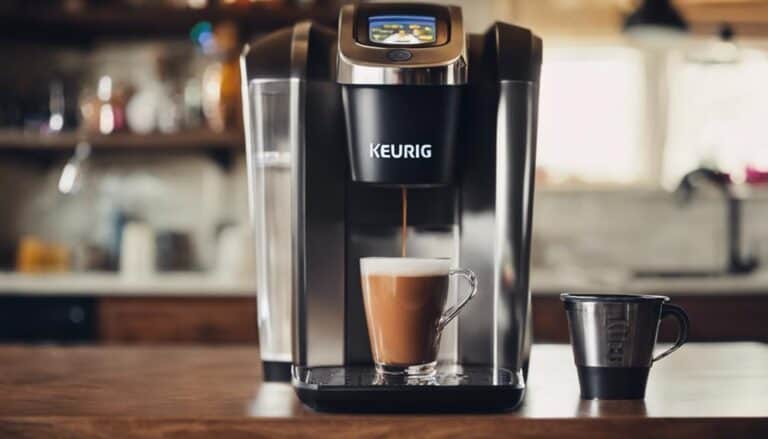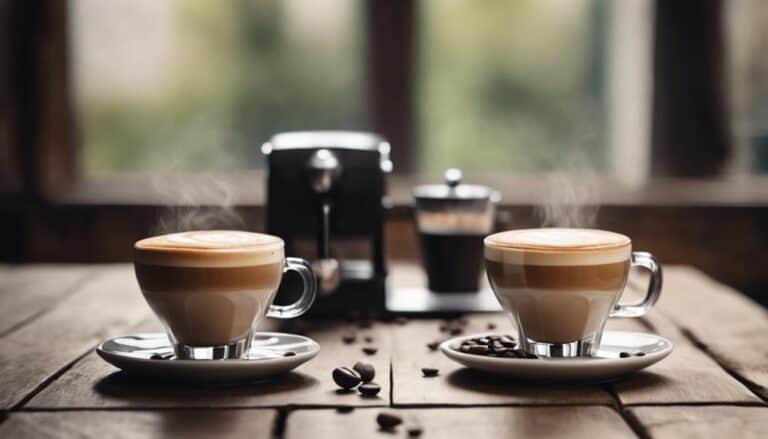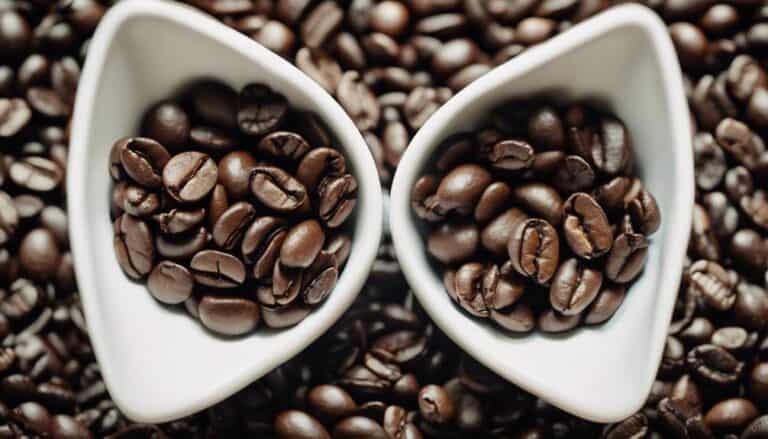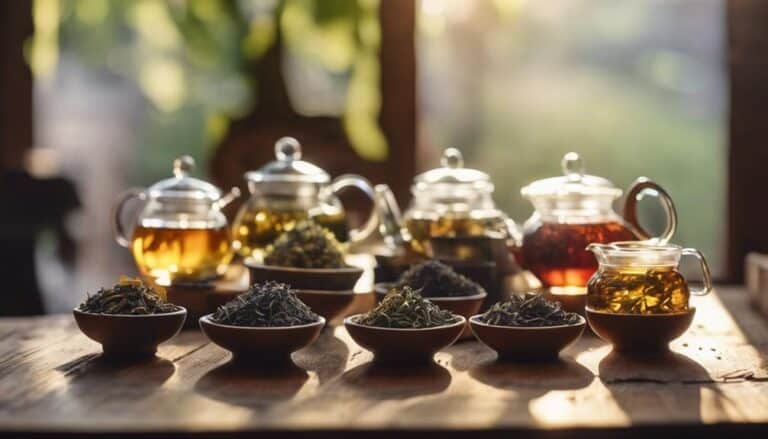How Many Scoops of Coffee Per Cup: A Definitive Guide
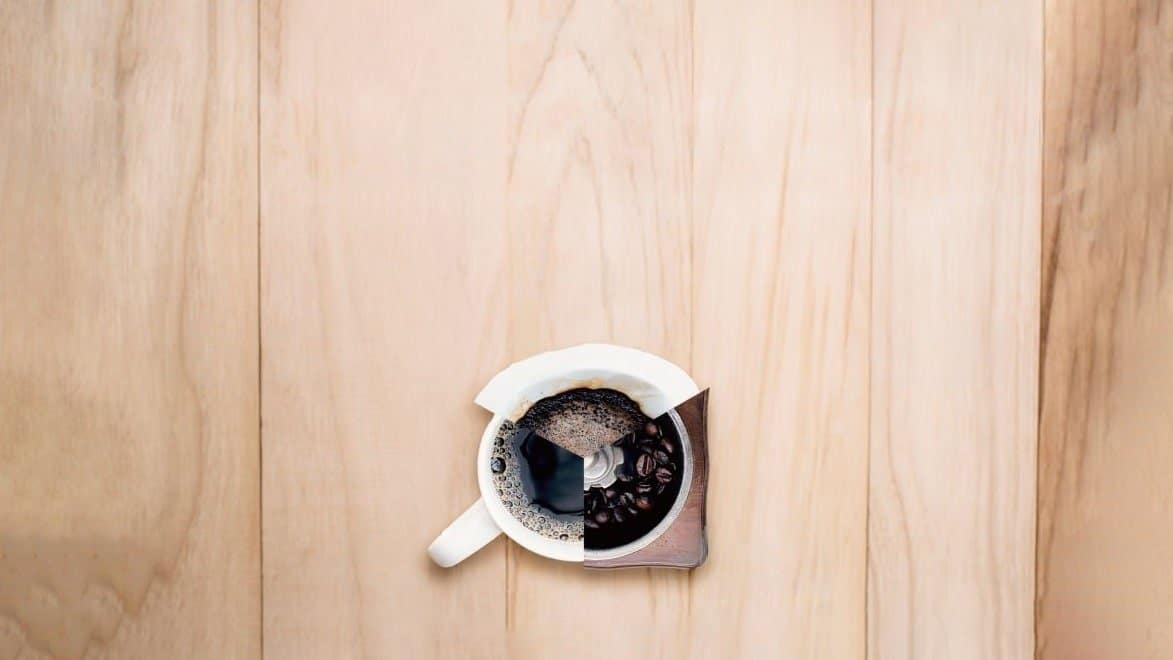
When it comes to brewing coffee, one of the most common questions is how many scoops of coffee per cup is the right amount. The answer is not as simple as you might think, as it depends on a variety of factors, such as the strength of the coffee you prefer, the type of coffee maker you use, and the size of your cup. In this article, we will explore the different factors that can affect how many scoops of coffee you should use per cup, as well as provide some general guidelines to help you achieve the perfect brew.

First, it’s important to understand that the amount of coffee you use per cup can greatly affect the taste of your coffee. Using too little coffee can result in a weak and flavorless cup, while using too much can make your coffee bitter and overpowering. The general rule of thumb is to use one to two tablespoons of coffee per six ounces of water, but this can vary depending on your personal preferences and the type of coffee you are brewing.
Another factor to consider is the type of coffee maker you are using. Different types of coffee makers, such as drip coffee makers, French presses, and espresso machines, may require different amounts of coffee to achieve the desired strength. Additionally, the size of your cup can also affect how many scoops of coffee you should use. A smaller cup may require less coffee than a larger one to achieve the same strength.
Understanding Coffee Measurements

As coffee lovers, we all want to brew the perfect cup of coffee. One of the most important factors that determine the quality of coffee is the amount of coffee used per cup. In this section, we will discuss different methods of measuring coffee, including the use of tablespoons, coffee scoops, measuring cups, measuring spoons, grams of coffee, and kitchen scales.
Tablespoons and Coffee Scoops
Tablespoons and coffee scoops are the most common tools used to measure coffee. A tablespoon is a standard unit of measurement, and most coffee scoops are equivalent to one tablespoon. However, it is important to note that the size of a tablespoon can vary, so it is not always the most accurate method of measuring coffee.
Measuring Cups and Spoons
Measuring cups and spoons are more precise tools for measuring coffee. Measuring cups are used to measure the volume of liquid, while measuring spoons are used to measure the volume of dry ingredients. When using measuring cups and spoons, it is important to ensure that you are using the correct size for the recipe.
Grams of Coffee and Kitchen Scales
For more exact measurements, you can use a kitchen scale to measure the weight of coffee in grams. This method is more accurate than using tablespoons or measuring cups, as it takes into account the density of the coffee. A digital scale is the most accurate type of kitchen scale, and it is important to calibrate it regularly to ensure accurate measurements.
Fluid Ounces and Exact Measurements
When measuring the amount of water to use, most coffee makers use fluid ounces as a standard unit of measurement. It is important to follow the manufacturer’s instructions for the exact measurement of water to use for each cup of coffee. Eyeballing the amount of water can result in a weaker or stronger cup of coffee than desired.
In conclusion, the method you use to measure coffee depends on your personal preference and the level of accuracy you require. While tablespoons and coffee scoops are convenient, they are not always the most precise methods. Measuring cups and spoons are more accurate, but using a kitchen scale provides the most exact measurements. Whatever method you choose, it is important to be consistent to ensure the best results.
Coffee-to-Water Ratio

When it comes to making a perfect cup of coffee, one of the most important factors to consider is the coffee-to-water ratio. This ratio determines the strength and flavor of your coffee, and getting it right can make all the difference.
The golden ratio for coffee-to-water is often cited as 1:15 or 1:16, which means using one part coffee to 15 or 16 parts water. However, this ratio can vary depending on personal preference and the type of coffee you’re using.
A general rule of thumb is to use one to two tablespoons of coffee per six ounces of water, or one coffee scoop for every eight ounces of water. On average, one coffee scoop is equal to two tablespoons of coffee. Therefore, if you’re using a standard eight-ounce coffee cup, you’ll want to use one coffee scoop or two tablespoons of coffee.
If you prefer a stronger cup of coffee, you can increase the amount of coffee you use. For example, you can use two coffee scoops or four tablespoons of coffee for an eight-ounce cup.
It’s important to note that the type of coffee you’re using can also affect the coffee-to-water ratio. For example, darker roasts tend to be stronger and more intense, so you may want to use slightly less coffee per cup. On the other hand, lighter roasts may require slightly more coffee to achieve the desired strength and flavor.
In summary, the coffee-to-water ratio is an essential factor in making a perfect cup of coffee. While the golden ratio is a good starting point, personal preference and the type of coffee you’re using can affect the ratio. By using the general rule of one to two tablespoons of coffee per six ounces of water, you can adjust the ratio to suit your taste and achieve the perfect cup of coffee.
Factors Influencing Coffee Strength
When it comes to coffee, strength refers to the intensity of the flavor. A stronger cup of coffee has a more robust flavor, while a weaker cup of coffee has a milder taste. The strength of coffee is influenced by several factors.
Coffee-to-Water Ratio
One of the most significant factors affecting coffee strength is the coffee-to-water ratio. The standard ratio is 1 to 2 tablespoons of coffee per 6 ounces of water. However, personal preference plays a role, and some people prefer a stronger or weaker cup of coffee.
Grind Size
The grind size of the coffee beans can also affect the strength of the coffee. Finely ground coffee beans produce a stronger cup of coffee, while coarsely ground coffee beans produce a weaker cup.
Brewing Time
The brewing time is another factor that can influence the strength of coffee. The longer the coffee is brewed, the stronger it will be. If the coffee is brewed for too long, it can become bitter.
Water Temperature
The temperature of the water used to brew the coffee can also affect its strength. If the water is too hot, it can extract too much flavor from the coffee, resulting in a bitter taste. If the water is too cold, it can result in a weaker cup of coffee.
Type of Coffee Beans
Different types of coffee beans can produce coffee with varying strengths. For example, Robusta beans are known for producing a more robust cup of coffee, while Arabica beans produce a milder taste.
In conclusion, the strength of coffee is influenced by several factors, including the coffee-to-water ratio, grind size, brewing time, water temperature, and type of coffee beans used. By understanding these factors, you can adjust your brewing process to achieve the perfect cup of coffee for your taste preferences.
Choosing the Right Coffee
When it comes to making a great cup of coffee, choosing the right coffee is key. The type and quality of coffee you use can greatly affect the taste and aroma of your brew. Here are a few things to keep in mind when selecting your coffee:
Coffee Type
There are many types of coffee available, including ground coffee, whole coffee beans, and flavored coffee. Ground coffee is the most common type and is available in various grinds, including fine, medium, and coarse. Whole coffee beans are typically used by coffee connoisseurs who prefer to grind their beans for maximum freshness. Flavored coffee is also available, but keep in mind that the added flavors can affect the taste of your coffee.
Coffee Quality
The quality of your coffee can greatly affect the taste of your brew. When selecting coffee, look for high-quality beans that are free of defects. Coffee quality is often determined by factors such as altitude, soil, and climate.
Types of Roasts
Coffee is typically roasted to bring out its unique flavors and aromas. There are several types of roasts, including light, medium, and dark. Light roasts are typically more acidic and have a lighter body, while dark roasts are less acidic and have a stronger, bolder flavor.
Amount of Coffee Grounds
The amount of coffee grounds you use per cup can greatly affect the strength and flavor of your coffee. As a general rule, we recommend using one scoop of coffee grounds per cup of water. However, keep in mind that the strength of your coffee can be adjusted by using more or less coffee grounds.
By keeping these factors in mind, you can choose the right coffee for your taste preferences and brewing method.
Brewing Methods
When it comes to brewing coffee, there are several methods to choose from. Each method has its own unique characteristics, resulting in different taste and aroma profiles. Here are some of the most popular brewing methods and how many scoops of coffee per cup you should use for each:
Drip Coffee Maker
Drip coffee makers are one of the most common ways to brew coffee. These machines work by heating water and then dripping it over coffee grounds held in a filter. For a standard 12-cup drip coffee maker, we recommend using 12 scoops of coffee, or about ¾ cup of coffee grounds. Adjust the amount of coffee based on your taste preference, using 1 scoop (or 1 tablespoon) of coffee per 6 ounces of water.
French Press
French press coffee makers use a plunger and a mesh filter to brew coffee. The coffee grounds are steeped in hot water for several minutes before being pressed down to separate the grounds from the brewed coffee. For a standard 8-cup French press, we recommend using 8 scoops of coffee, or about ½ cup of coffee grounds. Adjust the amount of coffee based on your taste preference, using 1 scoop (or 1 tablespoon) of coffee per 4 ounces of water.
Espresso Machine
Espresso machines use high pressure to force hot water through finely ground coffee, resulting in a concentrated shot of coffee. For a standard shot of espresso, we recommend using 1 scoop of coffee, or about 7 grams of coffee grounds. Adjust the amount of coffee based on your taste preference, using 1 scoop of coffee per shot of espresso.
K-Cups
K-Cups are single-serve coffee pods that are used in Keurig coffee makers. These machines work by puncturing the K-Cup and forcing hot water through the coffee grounds inside. For a standard 8-ounce cup of coffee, we recommend using 1 K-Cup. Adjust the amount of coffee based on your taste preference, using stronger or weaker K-Cups as needed.
No matter which brewing method you choose, the key to a great cup of coffee is using the right amount of coffee grounds. Experiment with different amounts to find your perfect cup.
Personal Preferences
When it comes to coffee, personal preferences play a significant role in determining how many scoops of coffee per cup one should use. The ideal number of scoops per cup varies depending on factors such as taste preference, personal taste preferences, flavor profile, and the desired strength of the coffee.
For those who prefer a milder taste, a recommended serving size of 6 ounces with one scoop of coffee per cup is ideal. This will produce a well-balanced cup of coffee that is not too strong or too weak. However, for those who prefer a stronger cup of coffee, using less water or more coffee is recommended to achieve the desired flavor profile.
It is important to note that personal taste preferences play a crucial role in determining the ideal number of scoops per cup. Some people prefer a milder cup of coffee, while others prefer a stronger one. Experimenting with different amounts of coffee per cup is the best way to find the perfect balance that suits your taste buds.
To help you get started, we recommend using a kitchen scale or a measuring spoon to measure the coffee accurately. A digital scale is especially helpful as it provides precise measurements, making it easier to achieve the desired strength of the coffee.
In summary, determining the ideal number of scoops of coffee per cup is a matter of personal preference. Experimenting with different amounts of coffee per cup is the best way to find the perfect balance that suits your taste buds. Remember to use a kitchen scale or a measuring spoon to measure the coffee accurately, and most importantly, enjoy your perfect cup of coffee.
Experimentation in Coffee Making
As coffee lovers, we all know that making the perfect pot of coffee is an art. It takes time, patience, and a lot of experimentation to find the perfect coffee-to-water ratio, grind size, and water temperature.
One of the most important factors to consider when making coffee is the serving size. Whether you’re making a single cup or a full pot, it’s important to be consistent with your coffee measurements and ratios.
Another factor to consider is the size of your coffee pot. A larger pot will require more coffee grounds, while a smaller pot will require less. It’s important to adjust your measurements accordingly to ensure that you’re getting the perfect pot of coffee every time.
When it comes to consistency, it’s important to pay attention to the surface area of your coffee grounds. Finer grinds will have more surface area, which can lead to over-extraction and bitterness. Coarser grinds will have less surface area, which can lead to under-extraction and weak coffee.
Water temperature is another important factor to consider. Water that is too hot can scorch the coffee grounds, while water that is too cold will result in under-extraction. The ideal water temperature for brewing coffee is between 195°F and 205°F.
Experimenting with different grind styles can also have a big impact on the flavor of your coffee. For example, a French press requires a coarser grind, while an espresso machine requires a finer grind.
In conclusion, making the perfect pot of coffee requires a lot of experimentation and attention to detail. By paying attention to factors such as serving size, cup size, consistency, water temperature, grind size, and grind styles, we can ensure that we’re getting the perfect cup of coffee every time.
Special Considerations
When it comes to brewing coffee, there are a few special considerations to keep in mind. These considerations can help ensure that you are getting the most out of your coffee, both in terms of taste and caffeine content.
Accurate Measurements
One of the most important considerations when it comes to brewing coffee is accurate measurements. The Specialty Coffee Association recommends using between 6 and 10 grams of coffee per 8-ounce cup. This translates to roughly one to two tablespoons of coffee per cup.
Using accurate measurements ensures that your coffee is neither too weak nor too strong. It also helps you to avoid wasting coffee by using too much or too little.
How Many Scoops of Coffee?
While using a tablespoon to measure your coffee is a good rule of thumb, some coffee makers come with a scoop that is specifically designed for measuring coffee. If your coffee maker came with a scoop, be sure to use it to measure your coffee.
If your coffee maker did not come with a scoop, you can use a tablespoon instead. Just be sure to measure out the correct amount of coffee using the guidelines provided by the Specialty Coffee Association.
Other Considerations
In addition to accurate measurements and using the correct number of scoops, there are a few other considerations to keep in mind when brewing coffee. These include:
- Water temperature: The ideal water temperature for brewing coffee is between 195 and 205 degrees Fahrenheit.
- Grind size: The grind size of your coffee can have a big impact on the flavor of your coffee. Be sure to use the correct grind size for your brewing method.
- Brewing method: Different brewing methods require different amounts of coffee. For example, a French press requires a coarser grind and more coffee than a drip coffee maker.
By keeping these considerations in mind, you can ensure that you are brewing the perfect cup of coffee every time.
